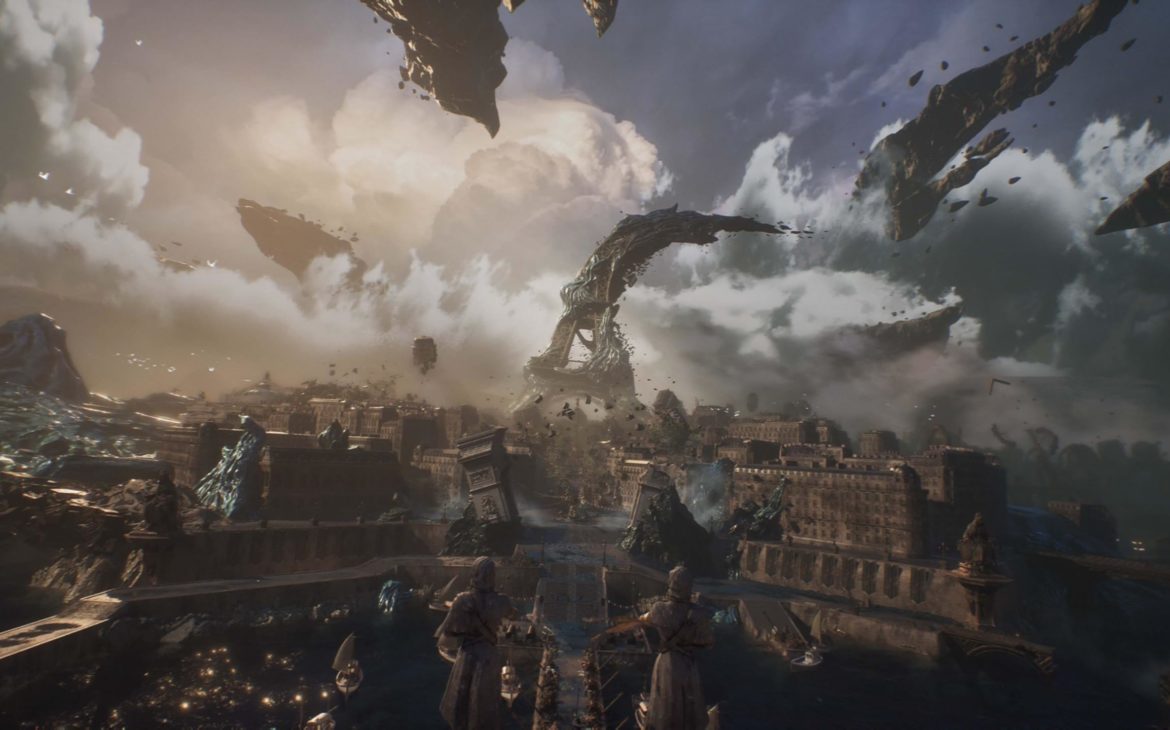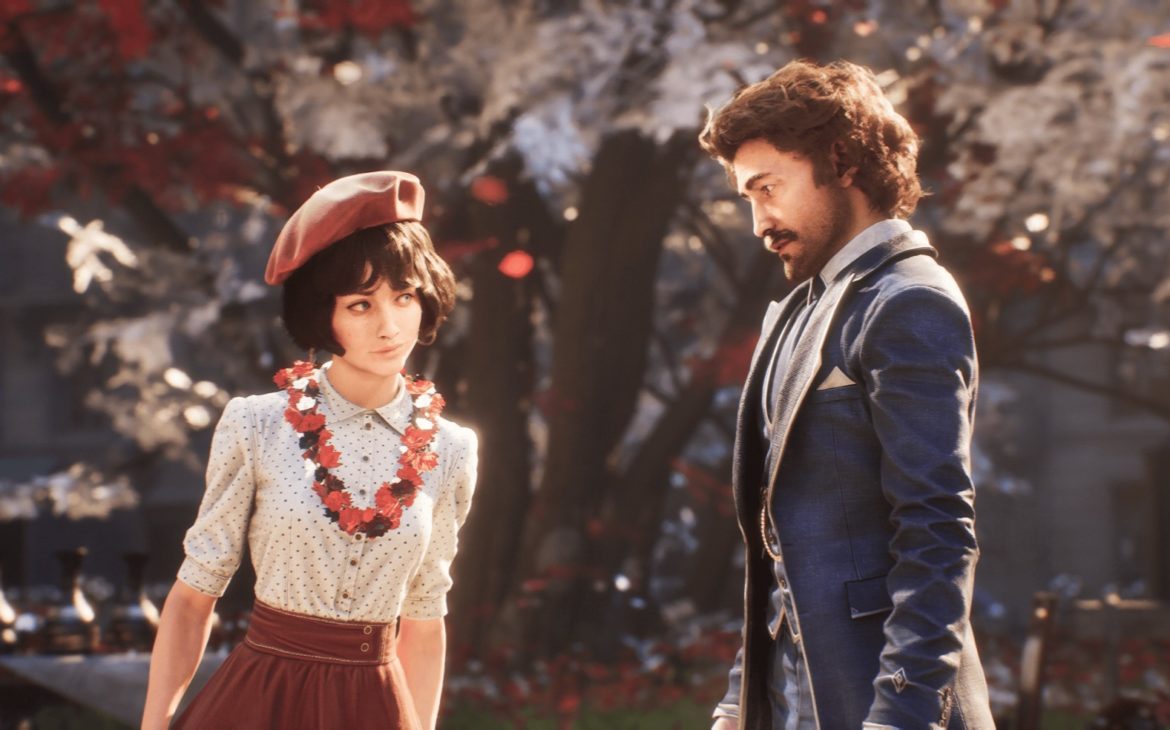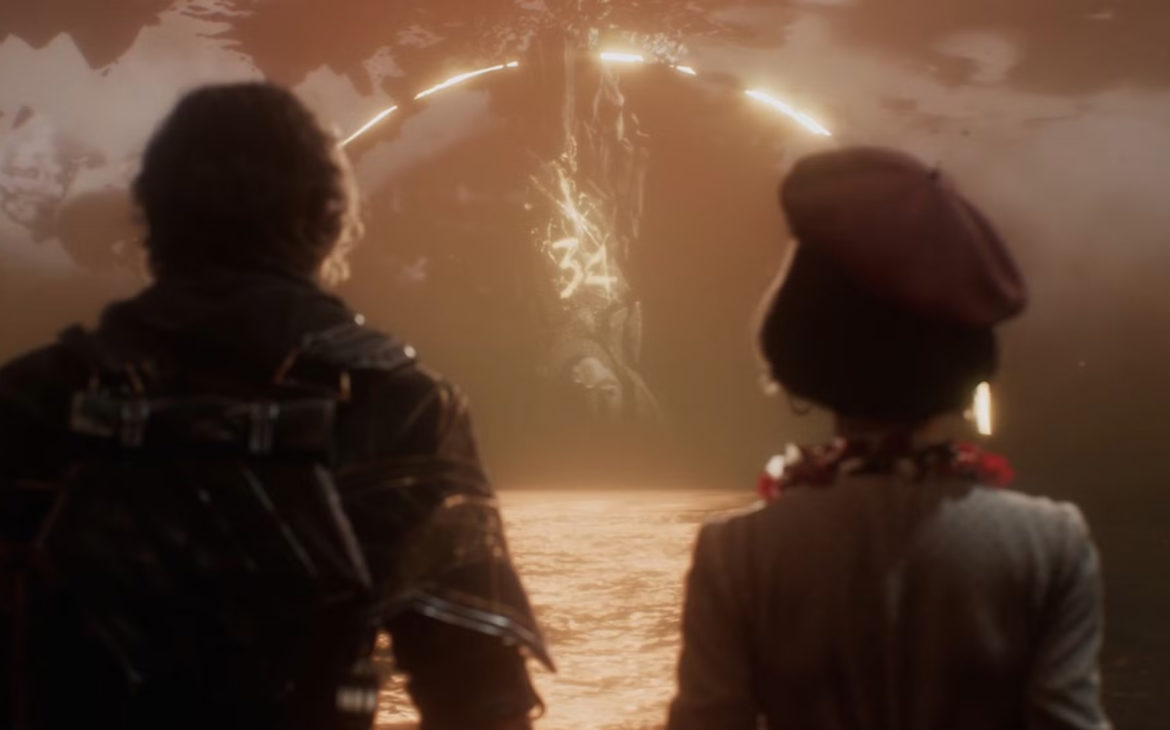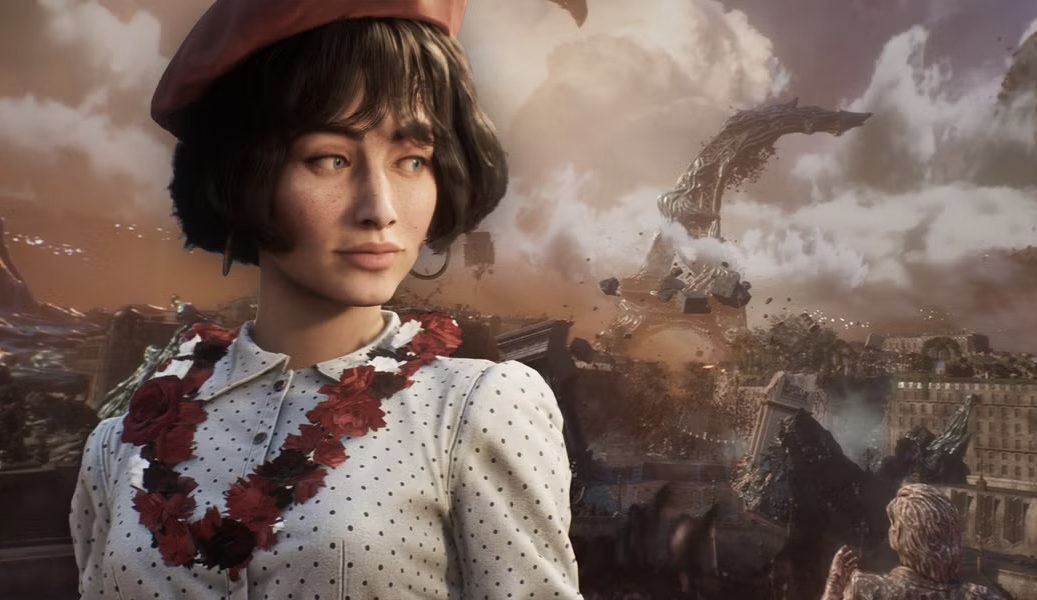GUEST POST;
Written by Ethan Lawrence
MINOR SPOILERS AHEAD for the opening of Expedition 33;
The three Toy Story films are very good and there are only three so don’t EVEN start. You’d be hard pressed to find a critic or cinema goer who would disagree with that assessment. However, there’s also no denying that if you were born in the late 80s or early 90s like, say, your author today, those three (only three) films hit diffy in an extremely profound way and the reason for this is simple: we were all Andy. We understood on a fundamental level the allure of a new toy, the heartbreak of a toy getting damaged or going missing and, finally and most potently, the need to let go of your childhood things when early adulthood comes calling. Whether the decision to hold off on Toy Story 3 for eleven years after 2 was deliberately savvy or a happy accident, those of us who were children when the first film came out were now a decade and a half older, experiencing the weightlessness of striking out into the adult world. Toy Story 3 took that feeling and provided an almost overwhelming sense of mortality to it, reminding us that everything that felt so important to us as growing people eventually fall away with devastating results if they are an anthropomorphic cowboy doll with Tom Hanks’ voice. We are now OVER a decade and half hence since the last Toy Story film came out (SHUT UP SHUT UP SHUT UP) and those themes of mortality and redundancy are only more potent as the reality of personhood in an uncaring and increasingly unstable world hits us daily. What a bloody good trilogy.
I found myself reflecting on this as I sat back in my chair, tears streaming down my face, having just finished the prologue to Clair Obscur: Expedition 33, a new game in the JRPG style (or, as some internet commenters have referred to it given how French it is, a J’RPG) developed by Sandfall Interactive and published by Kepler Interactive. You may well have heard of it, especially if you keep up with your gaming news which, given you’re reading a publication as august as Finger Guns you almost certainly are. This brand new IP from a new studio made up of some former Ubisoft staff managed to clear 2 million sales in twelve days which is an extraordinary feat. Equally as extraordinary is the state playing the first 45 minutes to an hour or so left me in. Emotionally shattered, I switched the game off and messaged Rossko (of this parish) and pitched to write an analysis of this opening. I felt I couldn’t continue playing until I had done something to explore how this game had made me feel. This may well be the greatest beginning to any game I have ever played. And so, if I may, an analysis of the first hour of Clair Obscur: Expedition 33.
What is perhaps most impressive about the prologue is how it tells you so much with so little. With a whole world to build and entirely unique paradigm to sell, Clair Obscur opts to educate the player through small touches. This starts with the visuals which are extraordinary in their detail and fidelity. Our first shot is of a shattered city, buildings in ruins and held at impossible angles with what looks like a spire floating, unmoored, above the landscape in the middle distance. We cut to a statue flanked by the two broken pillars of what was perhaps once an arch (the arc de triumphe?). Bunting, alternating red and white, is strewn haphazardly, but connecting to that central statue which naturally draws the eye to the centre of the frame. Looming over everything is this immense tower, wreathed in black clouds and lit by a sun in near total eclipse. In sharp jagged lettering on the tower is the number “34”. Another cut shows us a small garden on potted plants. That ever present 34 is still there, now in soft focus, as the camera pulls back to show a man of a slight build gazing up at the number with his back to us.

In under a minute, Clair Obscur has told us so much about the state of play. The world? Apocalyptic. The scale? Vast. The magic level? High. The tone? Deeply sombre as the visuals are accompanied by a soft female vocal, a gentle, melodic chanting. And yet, there is life here. Who put that bunting up and why? Plants still grow, not wild and untamed but cultivated. There is a society here, however hopeless. The man throws a rock and for the first time we see that the tower is separated from this place by an ocean. On a bench next to him is a single, healthy rose. A female voice speaks: “If you’re gonna give someone flowers, you should probably do it before they wither and die”. Woweeeee. This was the moment I was hooked. I’m a sucker for a nice bit of melancholia and this strikes that tone with change left over.
These two characters are Gustave and Maelle and between them we learn the state of play in sparse dialogue. The city is called Lumiere, there is a festival taking place, there is an entity called The Paintress which seems to be responsible for the hopeless surroundings. They reference the expeditions, a seemingly failed project to end this world order which Gustave has apparently signed up to and leaves with very soon. But first there is the matter of the flower whose intended recipient is Sophie. She is set to face The Gommage which implies a sense of urgency to the flower delivery. A romantic history between Gustave and Sophie is alluded to, one that ended four years ago. But today is the day to make amends as whatever The Gommage is, it seems to represent Sophie’s last day alive.
A lesser game would have delivered all this straight down the line. Indeed, it probably would have looked a lot like the previous paragraph. However, there is a real naturalism to the dialogue and particularly in the delivery of voice acting. It never feels like they are explaining the plot to each other. The characters stutter sometimes, make mistakes and correct themselves. While it has functionally provided more questions than answers, the tone made me hungry to find out more.
Fear not, dear reader, I do not intend to just relay the prologue to you beat by beat. Instead I will jump ahead to the combat tutorial. As Gustave and Malle traverse the landscape (which continues the visual themes we saw in the opening shots of standard architecture and a lived in civilisation placed against impossible floating structures and items) they agree to a friendly duel to let off steam. The combat itself is turn based with a predetermined order of operations that will be familiar to those of you who have played Final Fantasy X. Gustave fights with a sword and a robot arm and you will need to use techniques unique to both in order to stack up damage. You have two gauges to manage: an AP bar which fills as you perform normal attacks and subsequently grants you access to skills. These skills, in turn, are used to fill an overcharge bar which, once topped off, can be used to hit a far stronger attack. While managing this there is also a push me pull you aspect with regards to defence. Similar to Sea of Stars, you are encouraged to respond to enemy attacks with timed button presses. Your options are to dodge or parry with the latter being harder to time but resulting in a counter attack if you are successful. I can already see from this early stage that there will be significantly more depth to explore as the training wheels come off further down the line but, for now the combat has sold itself well.
When Gustave arrives in the centre of Lumiere we finally meet Sophie who wears a garland of flowers around her neck. She is saying goodbye to some friends of hers as Gustave charmingly but awkwardly interrupts. Again, here, the dialogue absolutely sparkles as the two former lovers talk over each other, stumble on their words and in their silences allude to a long history we may never truly know about. There is no antagonism, rather a tenderness and sadness that things didn’t work out the way they should have done and now it’s too late. Gustave tenderly affixes the rose to Sophie’s garland and instead of choosing to say goodbye there they walk together to the harbour where Sophie will face The Gommage. It is during this traversal where the prologue changes from excellent to possibly approaching masterpiece.

The festival in Lumiere is in full swing with a large central street packed with people. Some people are wearing the very same garland of flowers, marking them out as future victims to the Gommage. Through dialogues with random NPCs, we start to uncover the horror of what is happening here. The number on that tower, daubed by The Paintress anew every year, represents the upper limit of what age a person can reach. She appeared after an event referred to in oblique terms as The Fracture, first writing the number 100. That number has decreased by one year on year, despite the attempts of the titular expeditions to travel to the Paintress to destroy her. 76 years on we have joined this story on the eve of yet another Gommage which promises to eliminate all 33 year olds from existence. This is Dark Fantasy Logan’s Run. Gustave is accompanying Sophie to her ultimate destruction.
The amount of people you can talk to as you travel down this busy street is limited which in my view is a good thing. A lot of RPGs (particularly, it must be said, Final Fantasy from which this game takes a lot of inspiration) are keen for every character to be interactable which necessitates a lot of redundant flavour text. Instead, Clair Obscur goes deep instead of wide. We meet a woman talking to her daughter who criticises Sophie for not having had children. Sophie responds not with anger but with world weary sadness. She didn’t want to bring a child into a doomed world or maybe… Gustave didn’t and that’s why the relationship ended? Either way, she tells this woman to focus on her last moments with her daughter. We meet a man who is also fated for The Gommage whose son is angry with him and has refused to come. He entreats us to give an expedition uniform to his boy should we see him. A woman stands in front of a stage where people are recruiting for volunteers for the next expedition. She criticises the false hope they offer as well as the need for precious resources to go with them. There is a kind of bravery to the developers to refuse to go down the traditional RPG route of the fated apocalypse being balanced out by the chosen heroes. Instead, these people are battered, bruised and fast losing hope. By putting the unique politics of the world at the forefront it encourages the player to engage with its themes in a thoughtful way. Was that mother right to have faith in the expeditions and in the continuation of the human race? After all, every year the population decreases and perhaps it is selfish to not at least believe in salvation. But then again, is the true selfish act to bring a child into a doomed world where they will almost certainly lose their parents while heartbreakingly young and face their own extinction on a rapidly decreasing timescale? Does it ultimately matter when within 20 years there won’t be anymore children being born anyway?
If I’ve made this walk down the road sound miserable I must assure you it isn’t. The crackle of the dialogue and the exquisite voice acting carry the day and there are more than a few lighter moments to explore too. A personal favourite was a man who has hiding in a bin for six months in the belief that the Paintress will forget about him. The absurdity somehow grounds the doom. Lumiere, while on the road to perdition, is still a functioning society and the people still carry hope even as the time ebbs away. But eventually, we must reach the harbour. The game asks if you are ready to continue. Cruelly, you are the one who starts The Gommage.

This prologue has been defined by its economy and here, with just the open sea separating Lumiere from the blackened pillar of The Paintress, Clair Obscur triggers its quiet, devastating masterstroke. The skies darken. This figure of a cloaked woman moves across the tower in the distance, erases the 34 and replaces it with 33. There is a choked silence before, one by one, the people with flowers around their necks dissolve into gentle, fluttering zephyrs of rose petals and ash. The daughter of the woman who called Sophie selfish for not having children of her own has her hand suspended, holding nothing, as her mother disappears. The man whose son refused to attend because of some stupid fight blinks away tears as he is spirted away, that boy forever cursed with the memory of that fight being the last time he saw him. The camera pans across that bustling centre of Lumiere as person after person is swept away by the wind. Finally, Gustave turns to hold Sophie. “I’m here” he murmurs through gritted teeth, the immensity of his heartbreak clear. “I know… I know” Sophie reassures him. And then she’s gone. The petals fly skyward as the number 33 glows threateningly against the night sky.
There is an additional scene after this at the festival, where we meet the recruits for Expedition 33, which include Gustave and Maelle. You have the opportunity to have another duel with her but it is in the dialogue beforehand where Clair Obscur plays its last, sadistic trick that’ll be unique to me and others specifically like me. Maelle is younger than Gustave and refers to him as an old man, playfully. He retorts back but then the meaning behind that phrasing becomes clear. Gustave, at 32, is one of the oldest people alive. His place on the expedition is largely due to that fact; he only has one more year left in him before he faces The Gommage himself. The thing is, I’m 32 as well. I thought back to Andy from Toy Story in 2009 about to start college his whole life ahead of him. I looked at Gustave, sanguine and safe in his belief that his life will end in his early 30s so he may as well define those days with utility rather than despair. Another round of tears came. I switched off the console, contacted Rossko and wrote this.
Clair Obscur: Expedition 33’s prologue has a level of depth and profundity few games match across their entire runtime, buoyed by some of the greatest writing and voice acting I have ever heard. It remains to be seen if it is able to maintain this level of quality as I keep playing but I am so excited to find out. In a way, it almost doesn’t matter if it does or not. I will never forget how that prologue made me feel, the weight of the topics it asked me to consider and the sheer power of its economic and beautiful tone. I can’t in good faith recommend you buy a game based on an emotional connection I had to it in its first hour but also… you know… buy it and feel free to let me/us know what you thought.
This is why I’m not allowed to review games by the way. Or films. On account of being a Toy Story truther. What a great TRILOGY AND NOTHING ELSE that was.
You can find Ethan on X (@EthanDLawrence) and Bluesky (EthanDLawrence.bsky.social), and runs a podcast called Shut Up And Answer The Question which is available everywhere you get your podcasts.
–
For more News on Indie Games and more click here
Make sure to follow Finger Guns on our social channels –Twitter, Facebook, Twitch, Spotify or Apple Podcasts – to keep up to date on our news, reviews and features.
If you enjoyed this article or any more of our content, please consider our Patreon.
